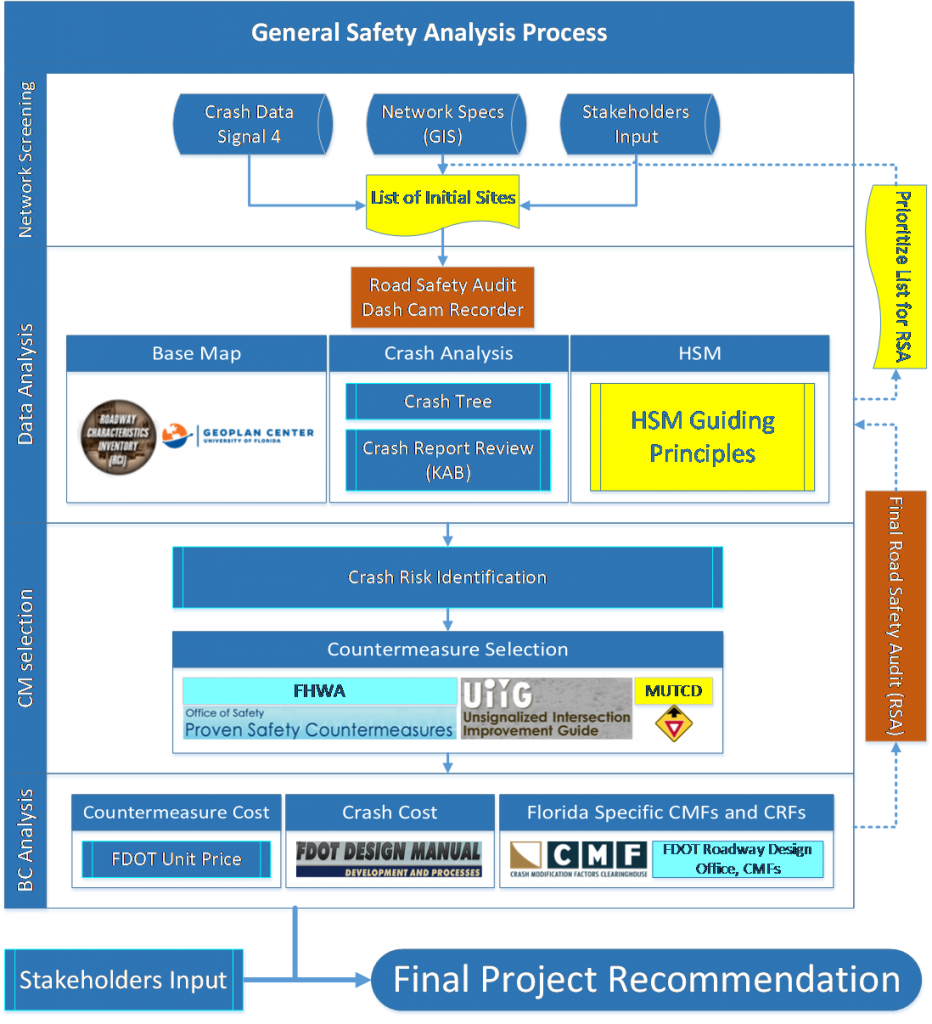In the traditional approach for finding candidates of investment for safety improvement, decision-makers analyze the historical crash data in order to find segments and sites with a history of high severity crashes. This methodology is called hot spot approach. This is while crashes on roadways are random events, and with extensive local road mileage, crashes are scattered all over the network. In 2018, the total public road mileage in Florida was 123,099 miles, of which 92,308 miles were local roads (FDOT, 2018). Although 75% of the road mileage in Florida is local roads, they carry only 20% of the total vehicle miles traveled (VMT): 123,583 out of 607,714 VMT. However, about half of the crashes (48.2%) in Florida in 2017 occurred on local and county roads (FLHSMV, 2018). With the low number of crashes in a large geographic location, finding a crash pattern is challenging because there is no concentration of crashes at any location. Considering the above paragraph, the alternate approach for hotspot analysis (systemic approach) requires more data and more effort.
Hotspot analysis along with crash reports reviewing, at its lowest, can give clues to decision-makers about the problems at the locations with a history of crashes.
In hotspot analysis, a 5-year fatal and incapacitating injury crash data was used to identify segments and intersections with a higher history of crashes.
For each site, a list of countermeasures was suggested and the benefit-cost analysis was reported. The suggested countermeasures and their approximate location were also visualized in the report as shown in the following figure.

The figure shows the overall process of the safety study.